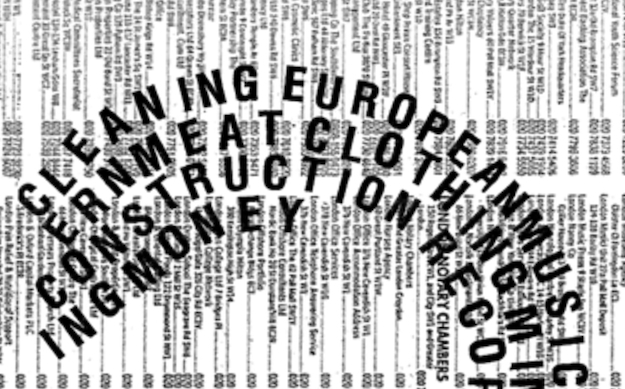 |
| Laurie Anderson performs United States I–IV |
As we near the end of the semester we'll take a little more time with our eighth project to ensure that everyone has the chance to try something ambitious without time constraints and that we as a class can enjoy, participate, and still offer critical perspectives.
The short version: over the course of weeks 11–13 you'll each have roughly half a class to engage in poetry in performance. Let's say 10–15 minutes max for each performance — though less time is fine as well — so that we'll also have sufficient time for discussion after the fact. So what can you do in those 15 minutes? Basically there are three main options:
- You can engage in a talk poetry piece with or without musical (or other sonic) accompaniment (either live or pre-recorded). Rather than post everything here, I'm simply going to provide links to materials I've assembled for my Poetry: Sound, Media, and Performance class: specifically pieces by John Cage, David Antin, Laurie Anderson, and Lee Ranaldo [link].
- You can write one or several short pieces of poets theater, which we as a class can act out. You'll find a number of longer examples as well as many tiny plays by Kenneth Koch here: [link]. There's also a helpful link to a Poetry Foundation essay on the genre and what links it to and separates it from traditional drama.
- You can write a performance script, or several small scripts, for us that are less narrative/dramatic and more deconstructive in approach to sound and/or performance. You can find several performance scores by Jackson Mac Low here: [link; and recordings of last spring's PSMP class performing a few pieces here: link] You'll find several Fluxus performance scores by Yoko Ono and George Brecht here [link]
The sky's the limit here and we can be your witting puppets, so have fun, produce something weird and wonderful, and let us bask in your genius(!) You're more than welcome, if you'd like, to arrange for pre-recorded sounds (which we can play over the classroom PA if you give me a link and/or bring in a device with an 1/8" jack [standard headphone size] we can plug into the laptop connection). Likewise, we can display whatever visuals you'd like over the two screens if necessary.
If you want to bring your own mics, instruments, effects, amps, etc. that's great as well but you should arrive early to set up and/or bring a pre-connected set-up (if possible). Talk to me about technical concerns in advance and we'll try to sort them out. In general, if you have any logistics questions, let's talk before your date and we'll figure out any potential issues.
If your piece has a written component — particularly in the case of poets theater or performance scores — you're responsible for making sure you bring enough copies for everyone in the class (10 in total).
I imagine that the element of surprise will be key here, so each piece will be due on its performance date. Materials will not be distributed in advance or formally written up, but we'll allow for a sufficient amount of time during each class for proper workshopping.
Here's our schedule, randomly selected as always:



